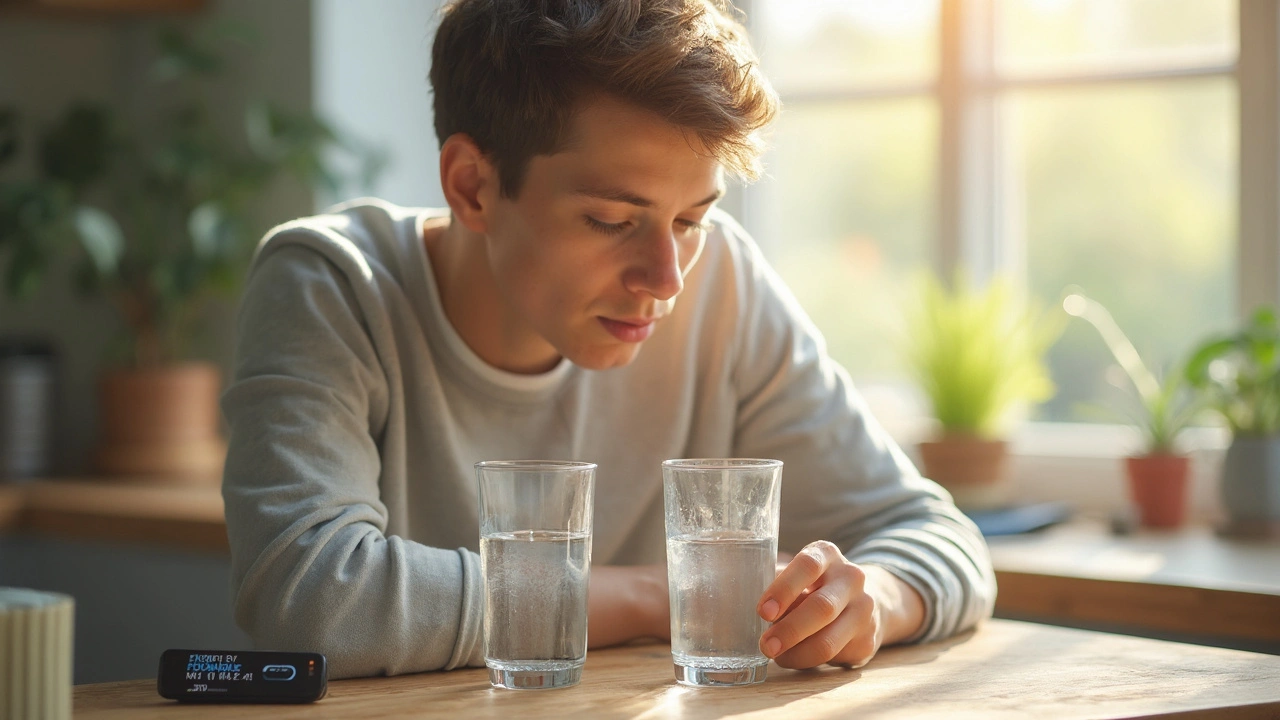Staying hydrated while taking spironolactone isn’t always straightforward—too little water can lead to dehydration, while too much can throw off your electrolytes. Learn how to strike the right balance with specific hydration guidelines, practical tips, and a deep dive into what actually happens when you’re on this common medication. This article covers risks, symptoms, and offers actionable steps backed by recent studies. If you take spironolactone for acne, high blood pressure, or hormone-related issues, here’s what you need to know about daily water intake and keeping your body's balance in check.
Hydration: Simple Ways to Keep Your Body Balanced
Feeling sluggish, getting headaches, or having dark urine? Chances are you’re not drinking enough water. Proper hydration fuels every organ, from your brain to your muscles, and helps you stay sharp and energetic.
How Much Water Do You Really Need?
The old "8 glasses a day" rule is a good starter, but the exact amount depends on age, activity level, climate, and body size. A quick rule of thumb is to aim for about 30 ml of water per kilogram of body weight. For a 70 kg adult, that’s roughly 2.1 L (about 9 cups) daily. If you exercise, sweat a lot, or live in a hot climate, add another 0.5–1 L.
Spotting Dehydration Early
Don’t wait until you feel dizzy. Early signs include dry mouth, a slight thirst, and urine that’s deeper yellow than pale straw. If you notice these, grab a glass of water right away. Severe dehydration can cause rapid heartbeat, confusion, and even fainting, so early detection saves trouble.
Here are three practical habits to lock in good hydration:
- Start your day with water. Keep a bottle by your bedside and drink 200‑250 ml as soon as you wake up. It jump‑starts your system after a night of no fluids.
- Set reminders. Use a phone alarm or a hydration app to prompt you every hour. Even a sip counts.
- Flavor naturally. If plain water feels boring, add a slice of lemon, cucumber, or a few berries. No sugar, just a hint of taste.
Food can contribute too. Fresh fruits like watermelon, oranges, and cucumber are over 90 % water. Including them in meals boosts your total intake without you even noticing.
Alcohol, coffee, and sugary drinks can pull water out of your cells. Treat them as occasional treats, not main drinks. If you do enjoy a coffee, follow it with a glass of water.
When you’re exercising, sip small amounts regularly instead of gulping a large glass at the end. A sports drink may help during long, intense sessions, but for most everyday workouts, plain water does the job.
Tracking your intake isn’t geeky—it’s a clear way to see if you’re meeting goals. Write down each glass, use a reusable bottle with volume markings, or simply notice how often you need to use the restroom. Regular urination (about every 2‑4 hours) usually means you’re on track.
Remember, hydration isn’t a one‑size‑fits‑all plan. Listen to your body, adjust for weather, and stay consistent. The next time you reach for a snack, consider if a glass of water might be the better choice. Your muscles, skin, and mind will thank you.

